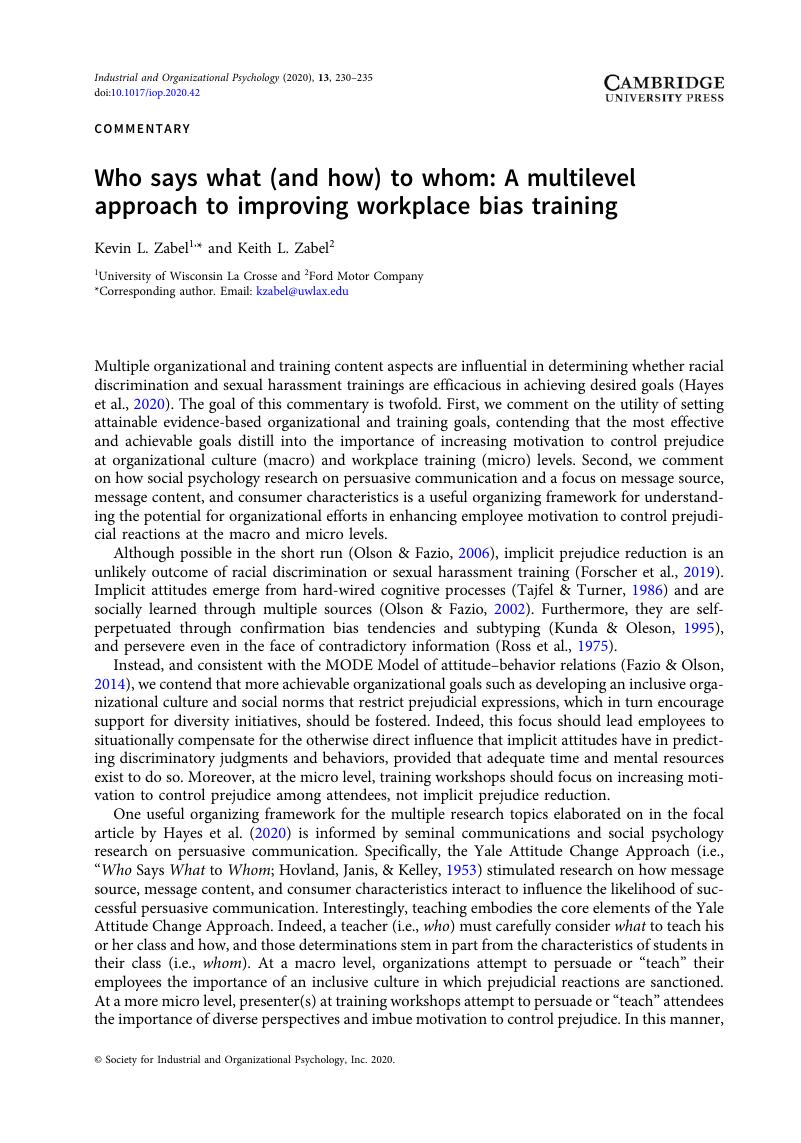Crossref Citations
This article has been cited by the following publications. This list is generated based on data provided by Crossref.
Roehling, Mark V.
Wu, Dongyuan
Choi, Mahl Geum
and
Dulebohn, James H.
2022.
The effects of sexual harassment training on proximal and transfer training outcomes: A meta‐analytic investigation.
Personnel Psychology,
Vol. 75,
Issue. 1,
p.
3.
Purvanova, Radostina K.
and
Bryant, Andrew
2025.
How to deliver gender diversity education to men: Training algorithms to the rescue.
Applied Psychology,
Vol. 74,
Issue. 1,


